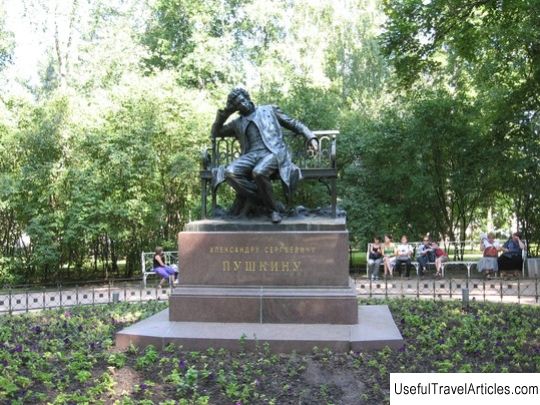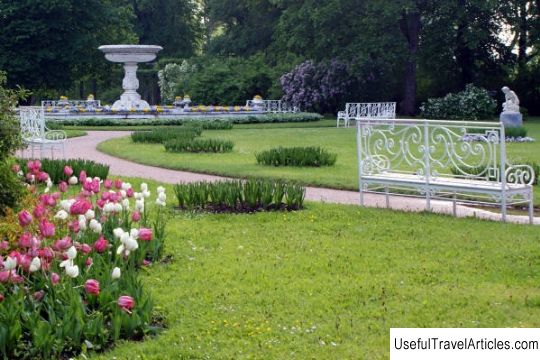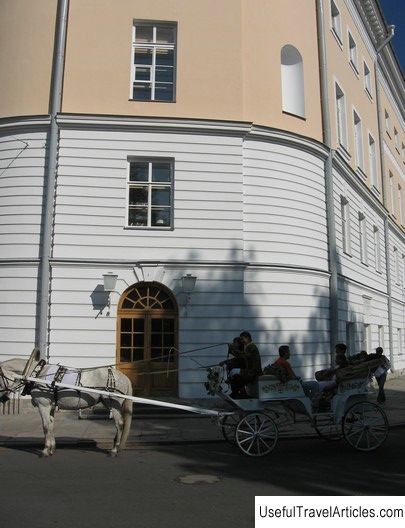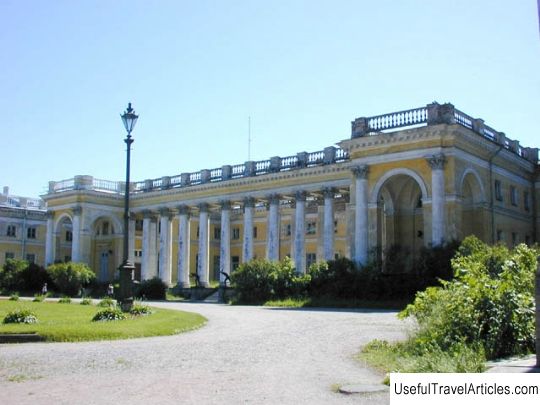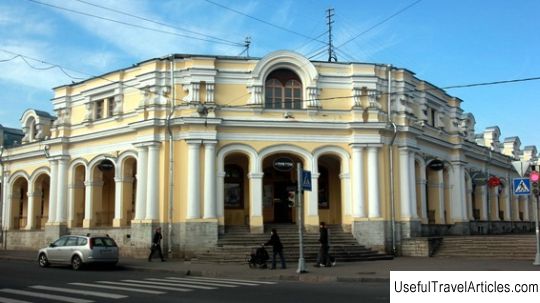Hanging Garden and Ramp description and photos - Russia - St. Petersburg: Pushkin (Tsarskoe Selo)
Rating: 8,6/10 (1077 votes) 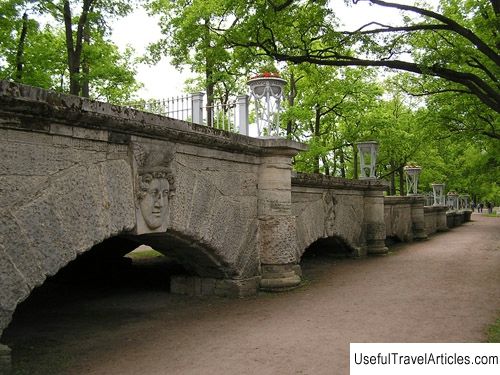
Hanging Garden and Ramp description and photos - Russia - St. Petersburg: Pushkin (Tsarskoe Selo). Detailed information about the attraction. Description, photos and a map showing the nearest significant objects. Photo and descriptionThe Hanging Gardens are one of the seven wonders of the world, the birth of which is associated with the legendary heroine of ancient myths Semiramis. Its historical prototype is the solely ruling Assyrian queen Shammuramat. Semiramis in myths possesses such qualities as imperiousness, deceit, resourcefulness of mind, courage. In myths, she kills her husband to gain power, which causes hatred and enmity on the part of her own son, who repeatedly tries to kill her. It is known that Catherine II the Great had a weakness for antiquity. The Tsarskoye Selo Hanging Garden appeared when the Empress expressed a desire to see in her residence a structure repeating in its appearance ancient buildings. It is difficult not to notice some similarities in the fate of Catherine II and Queen Semiramis. The tragic death of her husband Emperor Peter III (whom Catherine overthrew), which took place shortly after the palace coup, which she carried out, fell as a dark spot for the entire period of her reign. The empress's son, Paul, who took the throne after the death of his mother, considered her guilty of the death of his father. The Hanging Garden in Tsarskoe Selo was created by the architect Cameron, who was brought to our country by the same strong love for ancient architecture, which was also at the Empress's. Prior to his arrival in Russia, Cameron lived for several years in Rome. Here, according to the book of Palladio, an outstanding architect of the Renaissance, he explored the Roman baths. Their architectural analogue was once born in Tsarskoe Selo, of which the Hanging Garden was a part. For the construction of the Hanging Garden, a terrace was built between the Cameron Gallery at the height of the second floor, Zubovskiy wing and Agate rooms. This terrace is built on massive vaults, for which no less powerful pylons were built. Before the garden was laid out, a waterproofing layer of lead was lined on the terrace, on top of which soil was poured. It was suitable in composition and properties for the cultivation of apple trees, lilacs, jasmine, peonies, roses, daffodils and tulips. On the sides, the garden was bounded by a dolomite balustrade that had not survived to this day, which was mined on the island of Ezel. Already in the early 1800s, it was replaced by a wooden balustrade, painted white, as the former was badly dilapidated. After 5 years, the Hanging Garden was expanded due to the construction of the Ramp, which was the last Cameron project during the life of the empress. In 1792, Catherine the Great wished that a descent be arranged, through which one could easily get directly from the Hanging Garden to the rest of the Catherine Park. Cameron suggested not to build the stairs again, which was already in the Cameron Gallery, but to build a flat platform (ramp). The ramp was formed on 7 gradually lowering vaults and 3 pylons. Above the capstones of the vaults, there are carved masks of the ancient gods: Jupiter, Juno, Minerva, Mars and Mercury. After 2 years, the construction of the Ramp was completed. The construction work was supervised by Cameron's assistant - architect Ilya Vasilyevich Neelov. Bronze statues of muses were placed on both sides of the descent: Calliope, Melpomene, Euterpe, Polyhymnia, Terpsichore and others. Therefore, in the 18th century, the Ramp was also called the Ladder of the Gods. At the entrance below, there were 2 huge bronze vases. During the reign of Emperor Paul I, bronze statues were brought to Pavlovsk. They were returned to their former place by the beloved grandson of the Empress - Emperor Alexander I. At the end of construction, lattice iron gates appeared on the Ramp, which stood until the 1850s. In 1811 the Ramp was moved due to the construction of a Granite Terrace near the Hanging Garden. Near the Granite Terrace, there was a straight wide alley, which today is called Rampova. The purpose of this movement was to combine the direction of the Ramp with the direction of the Hanging Alley. In the second half of the 19th century, Emperor Alexander II issued an order to replace Cameron's gate with a new gate, which can still be observed today.      We also recommend reading Temple complex Sri Radha Krishna (Iskcon Temple) description and photos - India: Bangalore Topic: Hanging Garden and Ramp description and photos - Russia - St. Petersburg: Pushkin (Tsarskoe Selo). |
